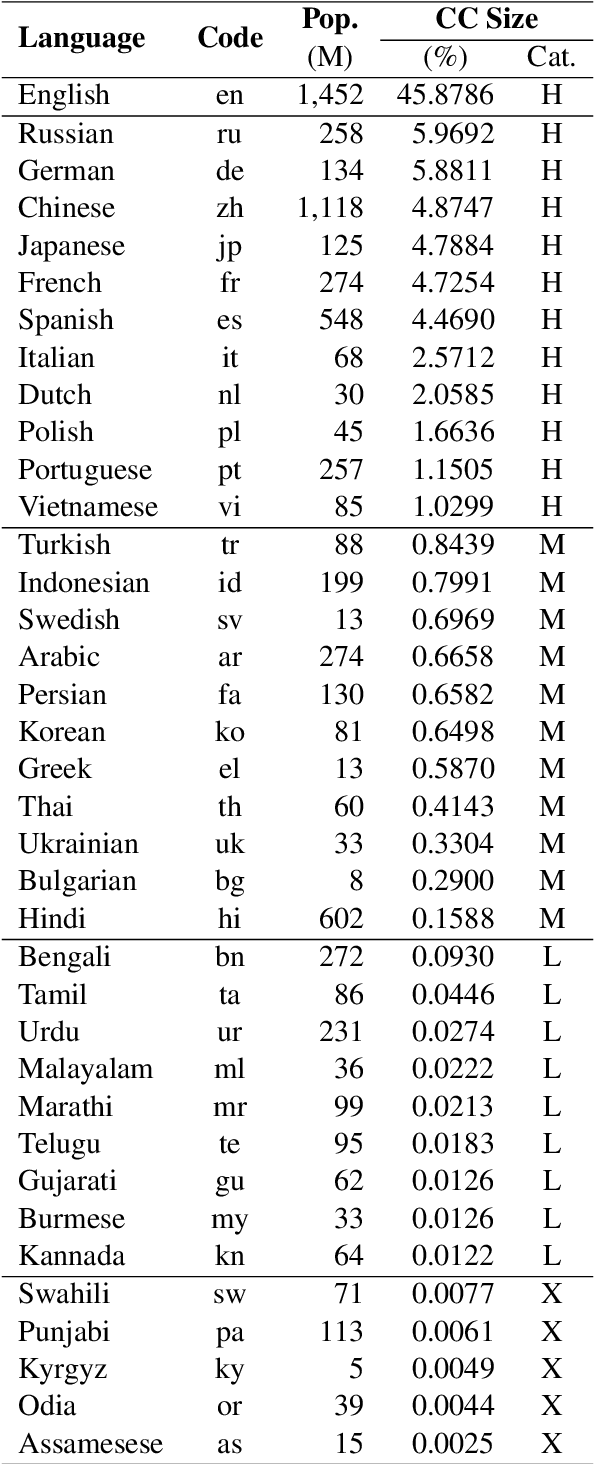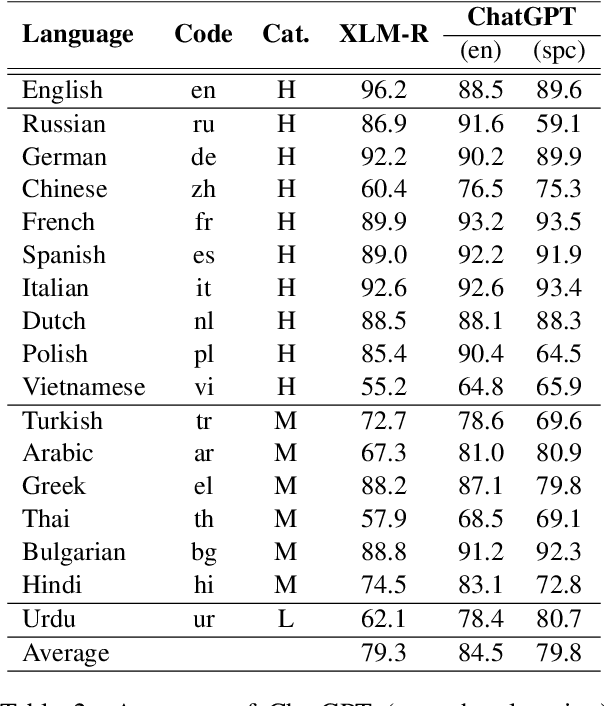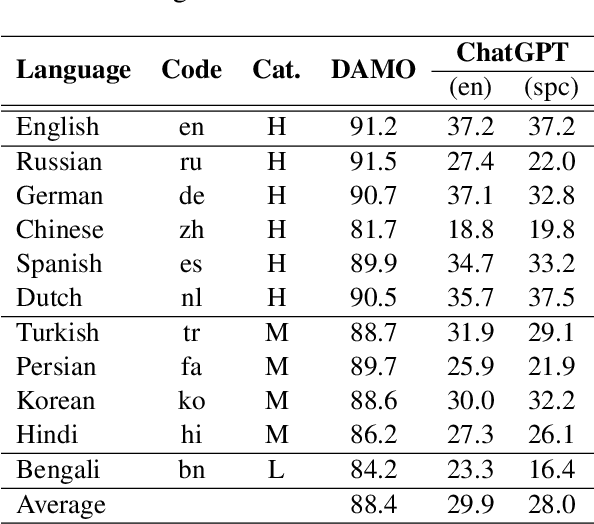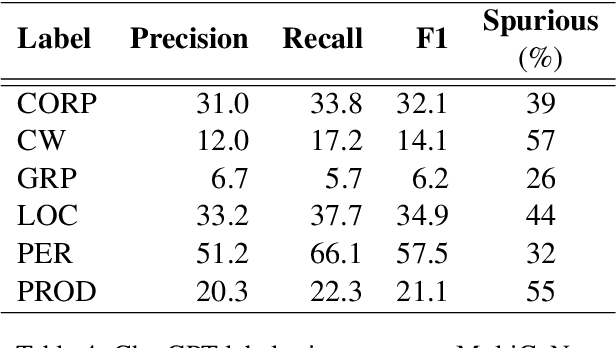Hieu Man
LUSIFER: Language Universal Space Integration for Enhanced Multilingual Embeddings with Large Language Models
Jan 01, 2025



Abstract:Recent advancements in large language models (LLMs) based embedding models have established new state-of-the-art benchmarks for text embedding tasks, particularly in dense vector-based retrieval. However, these models predominantly focus on English, leaving multilingual embedding capabilities largely unexplored. To address this limitation, we present LUSIFER, a novel zero-shot approach that adapts LLM-based embedding models for multilingual tasks without requiring multilingual supervision. LUSIFER's architecture combines a multilingual encoder, serving as a language-universal learner, with an LLM-based embedding model optimized for embedding-specific tasks. These components are seamlessly integrated through a minimal set of trainable parameters that act as a connector, effectively transferring the multilingual encoder's language understanding capabilities to the specialized embedding model. Additionally, to comprehensively evaluate multilingual embedding performance, we introduce a new benchmark encompassing 5 primary embedding tasks, 123 diverse datasets, and coverage across 14 languages. Extensive experimental results demonstrate that LUSIFER significantly enhances the multilingual performance across various embedding tasks, particularly for medium and low-resource languages, without requiring explicit multilingual training data.
ULLME: A Unified Framework for Large Language Model Embeddings with Generation-Augmented Learning
Aug 06, 2024


Abstract:Large Language Models (LLMs) excel in various natural language processing tasks, but leveraging them for dense passage embedding remains challenging. This is due to their causal attention mechanism and the misalignment between their pre-training objectives and the text ranking tasks. Despite some recent efforts to address these issues, existing frameworks for LLM-based text embeddings have been limited by their support for only a limited range of LLM architectures and fine-tuning strategies, limiting their practical application and versatility. In this work, we introduce the Unified framework for Large Language Model Embedding (ULLME), a flexible, plug-and-play implementation that enables bidirectional attention across various LLMs and supports a range of fine-tuning strategies. We also propose Generation-augmented Representation Learning (GRL), a novel fine-tuning method to boost LLMs for text embedding tasks. GRL enforces consistency between representation-based and generation-based relevance scores, leveraging LLMs' powerful generative abilities for learning passage embeddings. To showcase our framework's flexibility and effectiveness, we release three pre-trained models from ULLME with different backbone architectures, ranging from 1.5B to 8B parameters, all of which demonstrate strong performance on the Massive Text Embedding Benchmark. Our framework is publicly available at: https://github.com/nlp-uoregon/ullme. A demo video for ULLME can also be found at https://rb.gy/ws1ile.
CulturaX: A Cleaned, Enormous, and Multilingual Dataset for Large Language Models in 167 Languages
Sep 17, 2023Abstract:The driving factors behind the development of large language models (LLMs) with impressive learning capabilities are their colossal model sizes and extensive training datasets. Along with the progress in natural language processing, LLMs have been frequently made accessible to the public to foster deeper investigation and applications. However, when it comes to training datasets for these LLMs, especially the recent state-of-the-art models, they are often not fully disclosed. Creating training data for high-performing LLMs involves extensive cleaning and deduplication to ensure the necessary level of quality. The lack of transparency for training data has thus hampered research on attributing and addressing hallucination and bias issues in LLMs, hindering replication efforts and further advancements in the community. These challenges become even more pronounced in multilingual learning scenarios, where the available multilingual text datasets are often inadequately collected and cleaned. Consequently, there is a lack of open-source and readily usable dataset to effectively train LLMs in multiple languages. To overcome this issue, we present CulturaX, a substantial multilingual dataset with 6.3 trillion tokens in 167 languages, tailored for LLM development. Our dataset undergoes meticulous cleaning and deduplication through a rigorous pipeline of multiple stages to accomplish the best quality for model training, including language identification, URL-based filtering, metric-based cleaning, document refinement, and data deduplication. CulturaX is fully released to the public in HuggingFace to facilitate research and advancements in multilingual LLMs: https://huggingface.co/datasets/uonlp/CulturaX.
ChatGPT Beyond English: Towards a Comprehensive Evaluation of Large Language Models in Multilingual Learning
Apr 12, 2023



Abstract:Over the last few years, large language models (LLMs) have emerged as the most important breakthroughs in natural language processing (NLP) that fundamentally transform research and developments in the field. ChatGPT represents one of the most exciting LLM systems developed recently to showcase impressive skills for language generation and highly attract public attention. Among various exciting applications discovered for ChatGPT in English, the model can process and generate texts for multiple languages due to its multilingual training data. Given the broad adoption of ChatGPT for English in different problems and areas, a natural question is whether ChatGPT can also be applied effectively for other languages or it is necessary to develop more language-specific technologies. The answer to this question requires a thorough evaluation of ChatGPT over multiple tasks with diverse languages and large datasets (i.e., beyond reported anecdotes), which is still missing or limited in current research. Our work aims to fill this gap for the evaluation of ChatGPT and similar LLMs to provide more comprehensive information for multilingual NLP applications. While this work will be an ongoing effort to include additional experiments in the future, our current paper evaluates ChatGPT on 7 different tasks, covering 37 diverse languages with high, medium, low, and extremely low resources. We also focus on the zero-shot learning setting for ChatGPT to improve reproducibility and better simulate the interactions of general users. Compared to the performance of previous models, our extensive experimental results demonstrate a worse performance of ChatGPT for different NLP tasks and languages, calling for further research to develop better models and understanding for multilingual learning.
 Add to Chrome
Add to Chrome Add to Firefox
Add to Firefox Add to Edge
Add to Edge